When you think of reliable transportation two brands come to mind: Toyota and Honda. They have been fighting tooth and nail for decades and especially fighting with their minivan choices: the Honda Odyssey and Toyota Sienna. Both offer incredible amounts of comfort, luxury and family features, but who does it best – especially with the Odyssey just getting refreshed? Well, let’s go ahead and find out!
Pricing and Equipment
Now like always, let’s quickly establish the pricing and trim levels right from the start.
This time we are going with the top trims of both, which is the Platinum for the Toyota Sienna. To get all the features, it’s quite pricey at $55,273 after adding a few options.
Sienna Hybrid Platinum AWD: $52,345 | Options: +$1,578 | Destination: $1,350 | Total: $55,273
Now moving on to the Odyssey, its top model is called Elite. This trim comes in quite a bit less expensive than the Sienna. The total price saves you about $2,000 from the top Sienna, at just under $53K.
Odyssey Elite: $50,880 | Options: +$455 | Destination: $1,395 | Total: $52,730
By the way, if you want to get the best price from local dealerships and access to invoice pricing info for these two models or any vehicle, we have a tool on our website to do just that. Click here for more information!
Exterior Design
While minivans get a bad rap for not being very stylish, the Sienna has always made way more of an attempt than the rivals, which earned it the swagger wagon nickname. Honda hopes to achieve a little of that itself, too, since its 2nd refresh revised the grille and gave it a black finish for a sportier look.
Lighting is also quite important, and both are including LEDs as standard equipment. They also have LED fog lamps, but it’s only the Sienna with the LED turn signal indicator and more-premium projector LEDs instead of reflector LEDs for the Honda.
Moving to the side, you’ll see that there really isn’t anything mini about modern minivans. At 203 and 205 inches respectively, they are both larger than the Toyota and Honda SUV counterparts.
Length: 203.5-inches (Sienna) | 205.2-inches (Odyssey)
All that length translates to a lot of space which you’ll see later on, and design-wise we have 19-inch alloy wheels on Elite Odyssey, but on the Sienna, if you choose AWD, your wheels are automatically downgraded to 18-inchers. Not only are they smaller, but they’re covered with chrome hubcaps.
Heading out back, they both have unique designs with rear window wipers, no exposed exhaust outlets, and partially LED brake lights. And by partially, I mean only LED accenting on the Odyssey and accenting plus the brake light in the Sienna.
Lastly, with optional towing equipment, both can handle up to 3,500 lbs.
Towing (max): Odyssey: 3,500 lbs | Sienna: 3,500 lbs
Note: the Sienna’s optional hitch has been removed from pricing to be fair
Additional Features
Now checking out some of the individual features, both of their mirrors are fully loaded with heating, blind spot monitoring, power-folding, and even auto-dimming.
These are minivans, of course, so I’m happy to report that all active safety features are included on every trim.
For warranties, both are rocking the same basic and powertrain setups and even include complimentary maintenance. It’s worth noting, though, that Honda has reduced their maintenance down to 1 year while Toyota is still offering 2 years.
Toyota: Warranties: Basic Warranty: 3yr/36k mi | Powertrain: 5yr/60k mi | Complimentary Maintenance: 2yr/24k mi
Honda: Warranties: Basic Warranty: 3yr/36k mi | Powertrain: 5yr/60k mi | Complimentary Maintenance: 1yr/12k mi
But we all know that its what’s on the inside that matters most, and that’s especially true of minivans so let’s get into that.
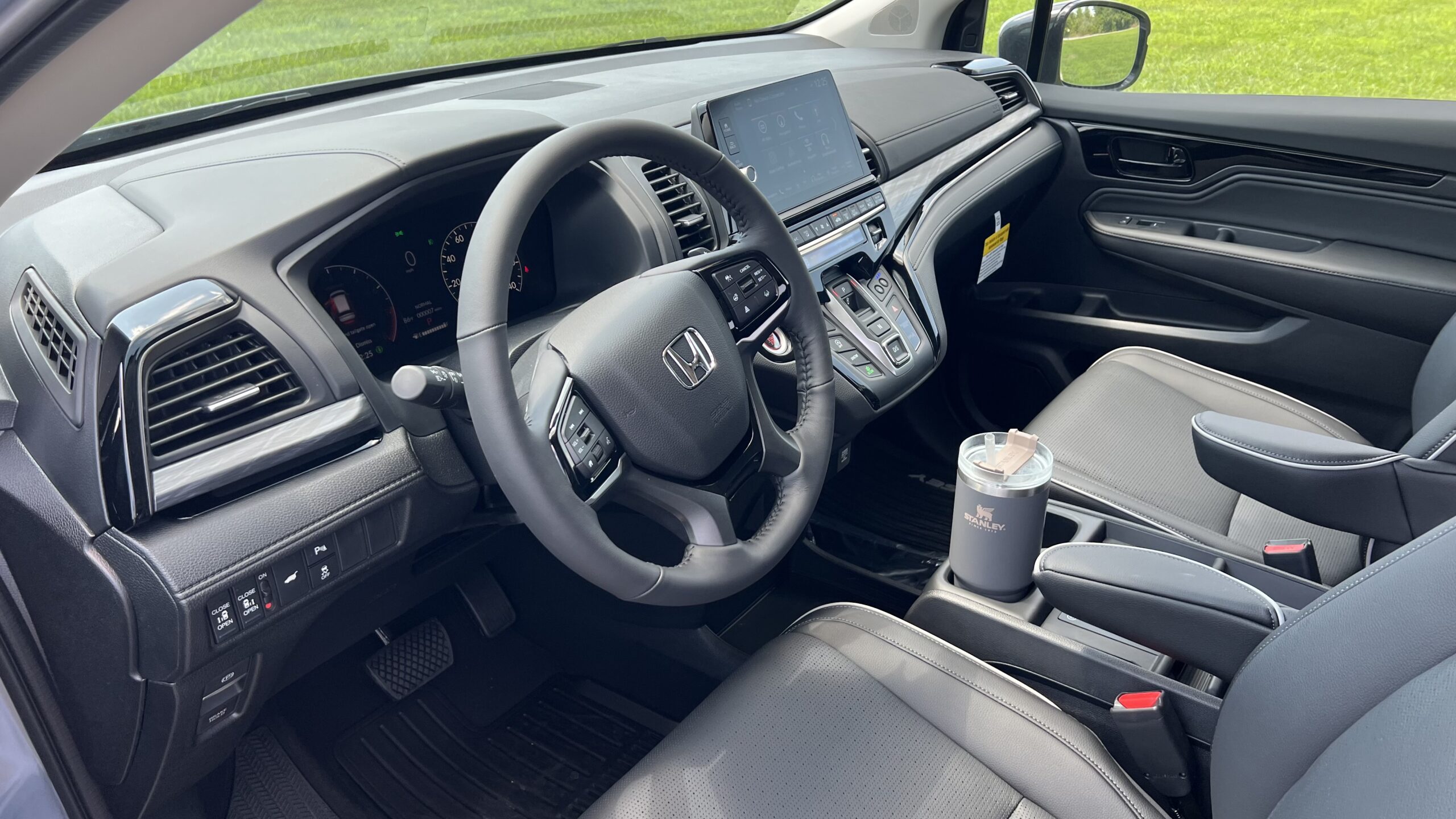
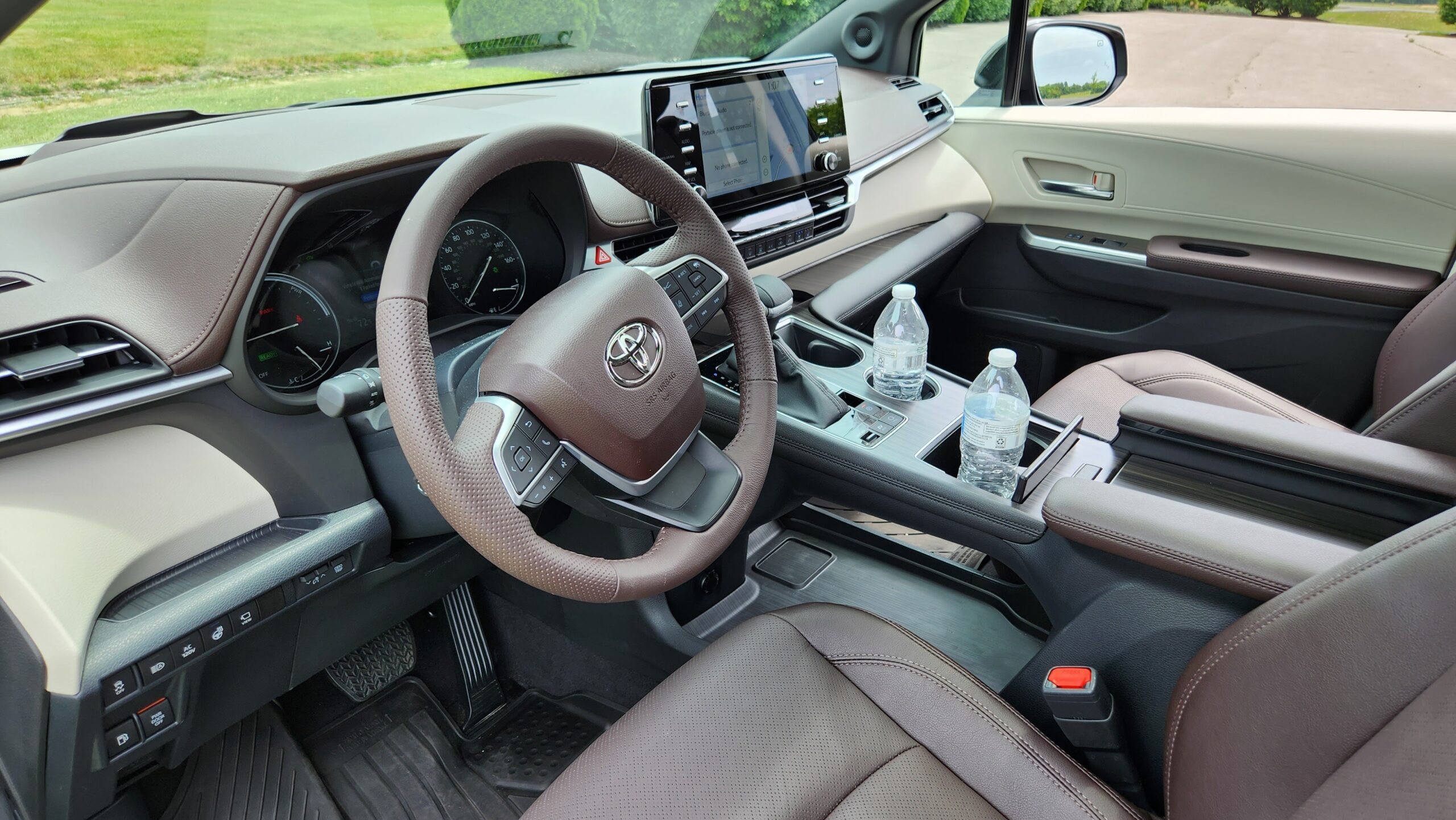
Interior Design
So, approaching both vans, you will find smart entry key fobs with some extra buttons on them for remote control of the doors. Honda also includes remote start on the fob, while the Toyota considers it part of their subscription services after the trial period runs out.
Now once you open up the doors, you’ll probably be surprised by how nice they appear, and you may not even want your kids eating on their nice leather seats.
That’s right, in their highest end trim levels, they rock real leather seats. On the Toyota, you’re locked exclusively into a Noble brown color option and the Odyssey you can pick a couple different choices. As far as adjustment, both the Sienna and Odyssey have 12-way power seats including 4-way lumbar support and besides that, they are also heated, ventilated and have memory.
Once we fully climb inside, we can get into the overall material quality. These two are similar with a mixture of leatherette, soft and hard touch plastic. The Toyota does include quite a bit more faux wood décor and leatherette padding where your knees rest, so it has a more premium feel.
After startup, you’ll see a partially digital cluster on that measures in at 7-inches. If you don’t want to look at that, though, it’s only the Sienna that includes a head up display.
Past that, both are including rain sensing wipers, and have heated, leather-wrapped steering wheels. Sienna also goes the extra mile and includes power adjustment.
Storage and Technology
But these are minivans after all, so let’s talk about the oh-so-important category of interior storage. Here, both minivans will excel. The Odyssey has a large center console with two cupholders, a large open area for storing items, and even two hidden storage cubbies. Even with all that space it’s still the Sienna with the slight advantage. It has a massive and versatile center console, floating center pass through, in addition to a passenger storage shelf missing from the Odyssey. That slight advantage will earn it a half point since parents really need as much space as possible for storing a snack or diaper bag up front.
Moving to the shifters, the Sienna has a traditional shifter and the Odyssey an electronic style. More importantly, when in reverse, you’ll find a 360-degree backup camera on the Toyota. Meanwhile, even despite the refresh, Honda has still not added this feature to the Odyssey.
Now moving past that, for climate, we have 3-zone and 4-zone climate on the Honda and Toyota respectively. Both have large physical controls.
And speaking of knobs, let’s get an audio sample. Both have upgraded audio systems which have pretty solid audio quality and not different enough to score a point.
Sienna: 12-speaker JBL Premium sound system
Odyssey: 11-speaker 550-watt premium audio system
Now it’s time to look at the screens, where we have some updates for the Odyssey this year. It bumped its previous 8-inch screen to a newer 9-inch setup instead for 2025. That means it now matches the 9-inch one in the Sienna. Both have integrated navigation, and for smartphone connectivity, it’s only the Odyssey with wireless CarPlay and Android Auto.
You won’t have to raise your voice to speak to the family, as both have built-in intercoms systems. However, only the Honda lets you watch the rear seat shenanigans with a built-in camera.
Moving on, both models have auto-dimming rearview mirrors and HomeLink remotes, in addition to standard size moonroofs.

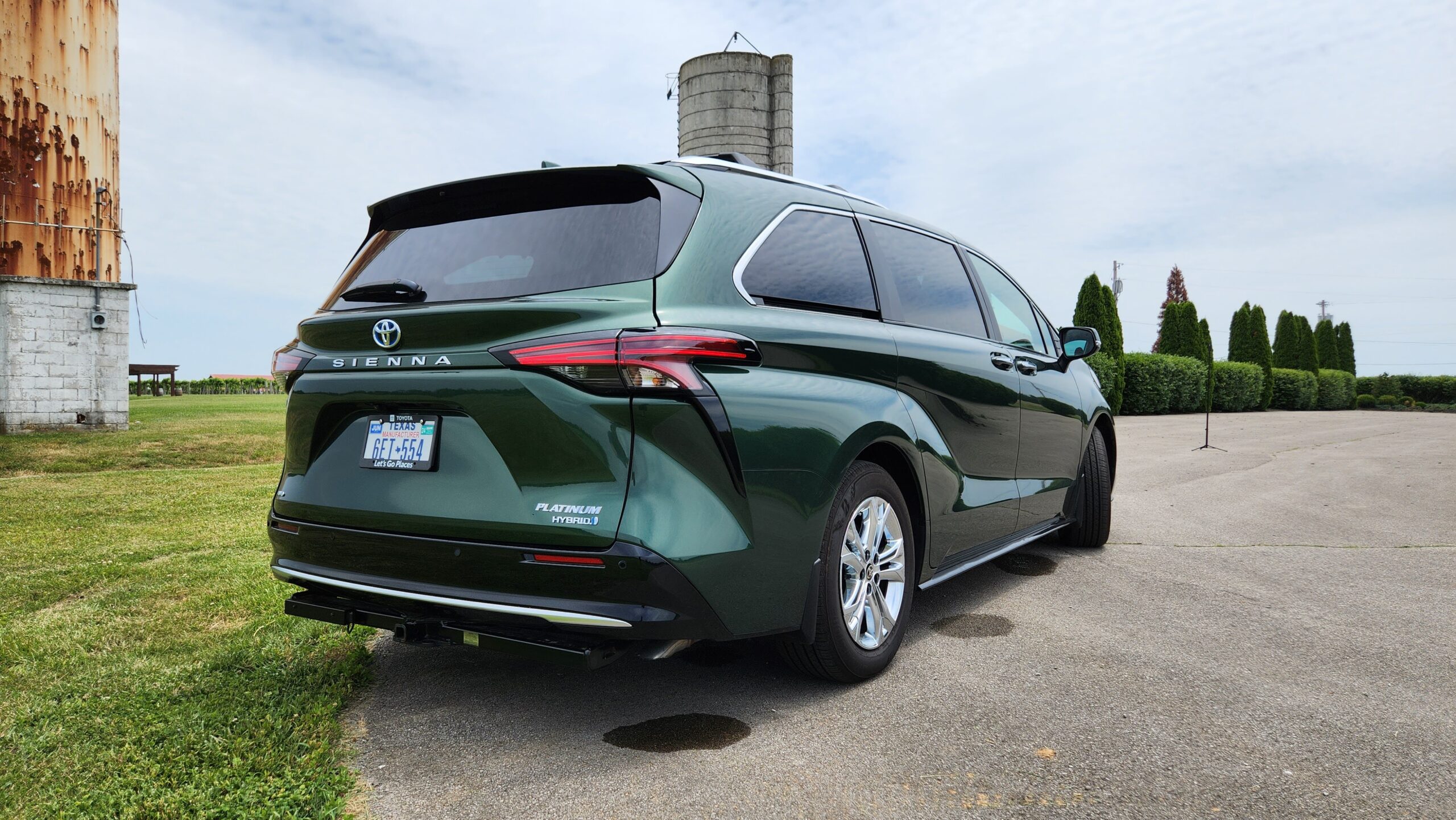
Rear Seats and Cargo
The features in the front may be nice, but it’s the rear seats that truly matter in this comparison. Before even getting in, you’ll notice both have power opening doors with kick ability on the Sienna.
Beginning with legroom and headroom, we have nearly identical figures for both. All measurements are less than the 5% difference required to score a point, but the Toyota has a secret trick up its sleeve. It has Super Long Slide seats, which can travel up to 25 inches, for nearly unlimited second row legroom. While the Honda does also slide a good distance, this feature is very cool for redistributing second and third row space as you see fit.
- Odyssey: Legroom: 40.9-in | Headroom 39.5-in
- Sienna: Legroom: 39.9-inches | Headroom: 39.3-inches
However, not to be outdone, the Odyssey has something called “Magic Slide” seats. That actually allows them not only to slide forward and back but side-to-side, allowing for separation like captain’s chairs or super easy access to the third row without folding the seat.
Continuing to discuss the seats, we have an important difference with overall passenger ability as well. The Sienna Platinum comes with captain’s chairs only which reduces your capacity down to 7-passenger seating. Meanwhile, the Odyssey Elite has an 8-passenger setup plus can even do the captain’s chair setup if you remove the middle seat. That flexibility is a big deal for many families.
It’s also worth noting Sienna can get full rear seat recliners on the Platinum, but as equipped, we don’t have that feature.
All that being said, we still have a wide range of creature comforts for both models. They have rear climate controls, vents, plenty of USB ports, household power outlets, sunshades, and even rear seat entertainment systems. Finally, heated rear seats are a feature exclusive to Sienna.
Let’s head to the next row of seats. Access to the third rows is very easy, and peaking back there, you’ll be shocked at how much space there is in both. They have as much space as most second rows, and as far as other features, both include are rear vents, reclining seats and third row sunshades.
- Odyssey: Legroom: 38.1-in | Headroom: 38.3-in
- Sienna: Legroom: 38.7-in | Headroom: 37.4-in
Moving out back, both have hands-free power tailgates, and once they open up, you will find the same scenario play out here as the third rows. They have copious amounts of space, but the Odyssey pulls ahead here. While they have the same space behind the third row, the Honda has 16% more space behind the second row, and a whopping 35% advantage with all the seats folded.
Odyssey: 32.8 cu.ft behind 3rd row | 88.8 cu. ft. behind 2nd row | 144.9 cu. ft. maximum
Sienna: Behind 3rd row: 33.5 cu.ft | Behind 2nd row: 75.2 cu.ft | MAX: 101 cu.ft
Folding the third rows is a manual process but can be done with one hand.
Now that we’re done with that, we can take a deep breath and take this close fight to the streets!
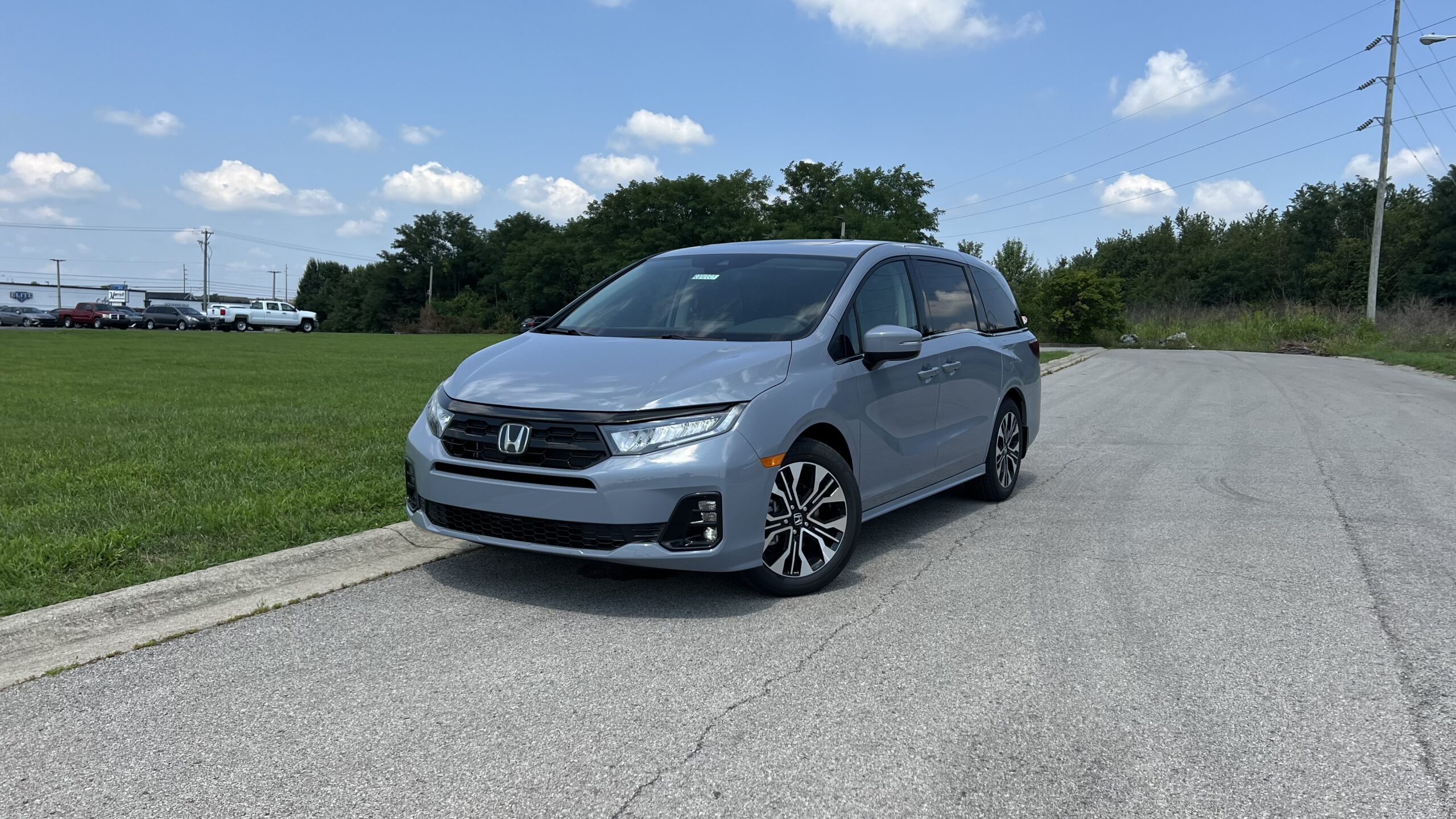

Powertrains
These minivans have been fighting it out tit for tat, and when it comes to the powertrain section, they take a very different approach. The Honda goes the tried-and-true way with a 3.5L naturally aspirated V-6 making 280 horsepower. Toyota, on the other hand, has made the Sienna hybrid-exclusive meaning it has a 2.5L 4-cylinder and electric motors, making significantly less power at 245hp. That difference can be felt during accelerations.
- Odyssey: 3.5L V-6: 280 hp | 262 lb.ft
- Sienna: 2.5L I-4 + Electric: 245 hp
The differences continue when it comes to the transmissions. The Sienna has an eCVT to maximize efficiency and the Odyssey goes with a traditional 10-speed automatic. In real life, most people prefer the traditional feel since it helps avoid any drone when accelerating.
Test Drive and Fuel Economy
Moving past that, I do want to mention an important difference. The Odyssey is FWD exclusive even after the refresh, meanwhile our Sienna is equipped with AWD for additional peace of mind in all kinds of weather. Based on the comments we see, this is a major point for people in this segment.
The Sienna sounds pretty strained at times when accelerating, but once you get up to speed, you probably want to know how quiet they are. Taking a sound level reading at 55 MPH on equivalent roads, both deliver nearly identical results. Since the average human can only discern about a 1 dB of greater difference, we won’t be giving any points.
Odyssey: 54.6 dB @ 55 MPH
Sienna: 54.4 dB @ 55 MPH
Next up, let’s discuss the ride qualities. They absorb all but the largest road imperfections, and certainly there is enough comfort for the family to catch some sleep on long road trips.
But now it’s time to talk about the real benefit of the Sienna’s hybrid setup. Despite having AWD, it still gets an impressive 13 MPG combined better than the V6 Odyssey. That will save you a lot of money at the pump over thousands of miles.
- Odyssey FWD: 19/28/22 MPG
- Sienna AWD: 35/36/35 MPG
Resale and Reliability
In our reviews and comparisons, we are also adding in reliability and resale information to give you a better picture of the overall value beyond just the original MSRP.
Beginning with reliability, we developed the Combined Reliability Index, which takes into account several studies from trustworthy sources, and combines them in a way that gives a more realistic picture. Toyota is our top brand ranking 16 slots ABOVE the industry average for all brands in reliability, while Honda also scores very highly, at 14 slots above average to be exact.
We also put Mason’s economics degree to work to develop a detailed Predicted Resale Value tool. After 5 years and 60,000 miles, both are either the highest or second highest. Honda retains a predicted 64.79% of its value and Toyota comes in at 64.50% after 5 years.
Resale is obviously important because it determines how much money you get back, but we can’t forget about the price difference at the original purchase. In this comparison, the Toyota Sienna costs $2,500 more than the Odyssey.
I want to emphasize that if money, reliability or resale value matter less to you personally, feel free to disregard these points. And if you’d like to check out all our data about reliability and resale values, as well as learn about our methodology, make sure to head to www.carconfections.com/resale and www.carconfections.com/reliability. Buying a car is a big decision, and this is a great place to compare all the makes you might be cross-shopping.
2025 Honda Odyssey vs. 2024 Toyota Sienna winner!
Wow so there is A LOT to consider between these two! But which one you choose is really going to come down a lot to personal preference. Now let’s discuss who should be “your” personal winner based on those preferences…
Sienna:
- Hybrid system with great fuel economy
- More luxury features (360 camera, heated rear seats, head up display)
- Amazing storage solutions in the front
Odyssey:
- V6 engine; smooth and refined
- 8 passenger seating in top trim
- Lower price
Now we want to know your opinions, so make sure to head to the comment section and let us know which one you would pick!
Thanks for joining us for another Car Confections Comparison! We’ll catch you next time as we sample the latest automotive delicacies!


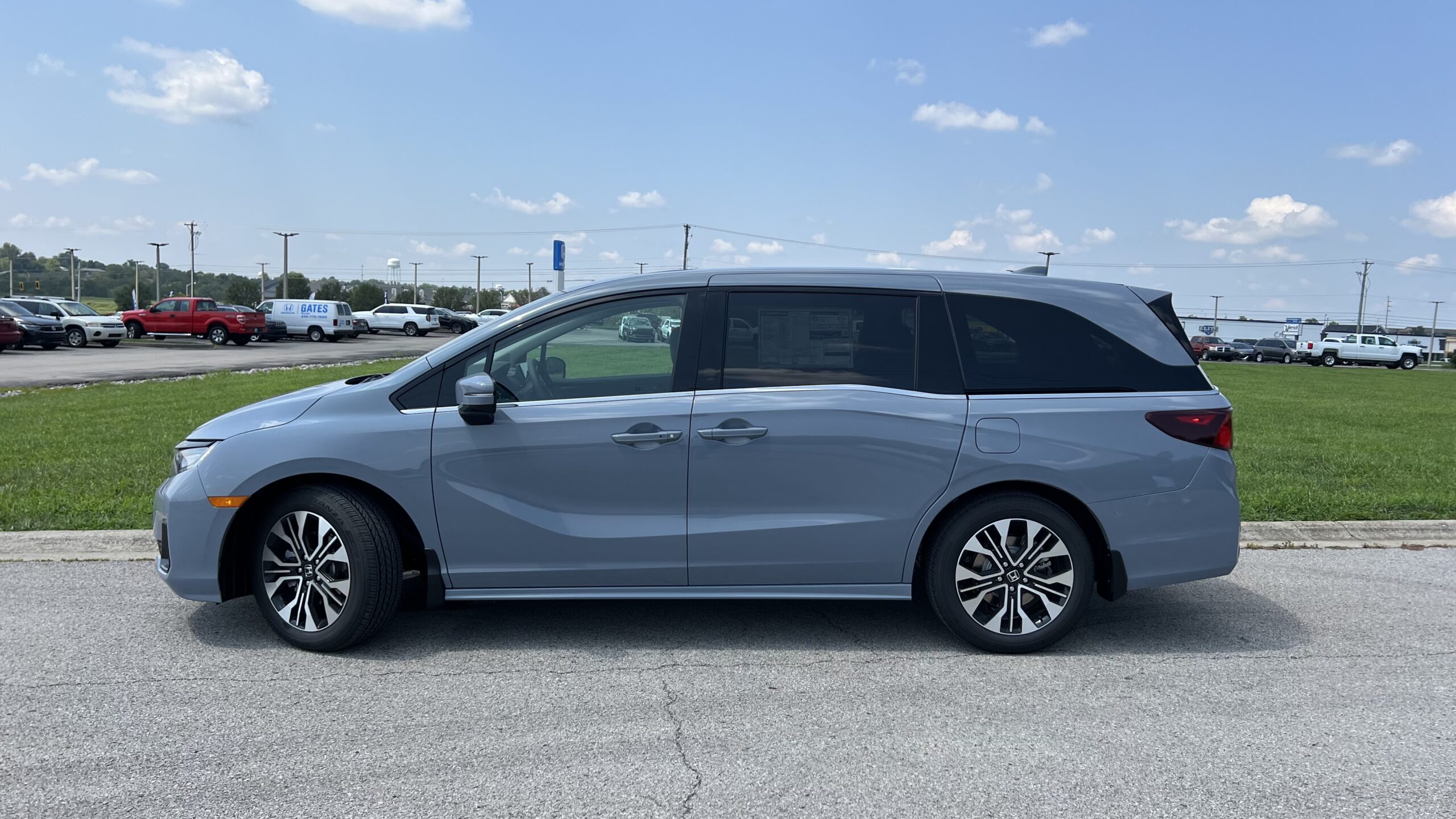
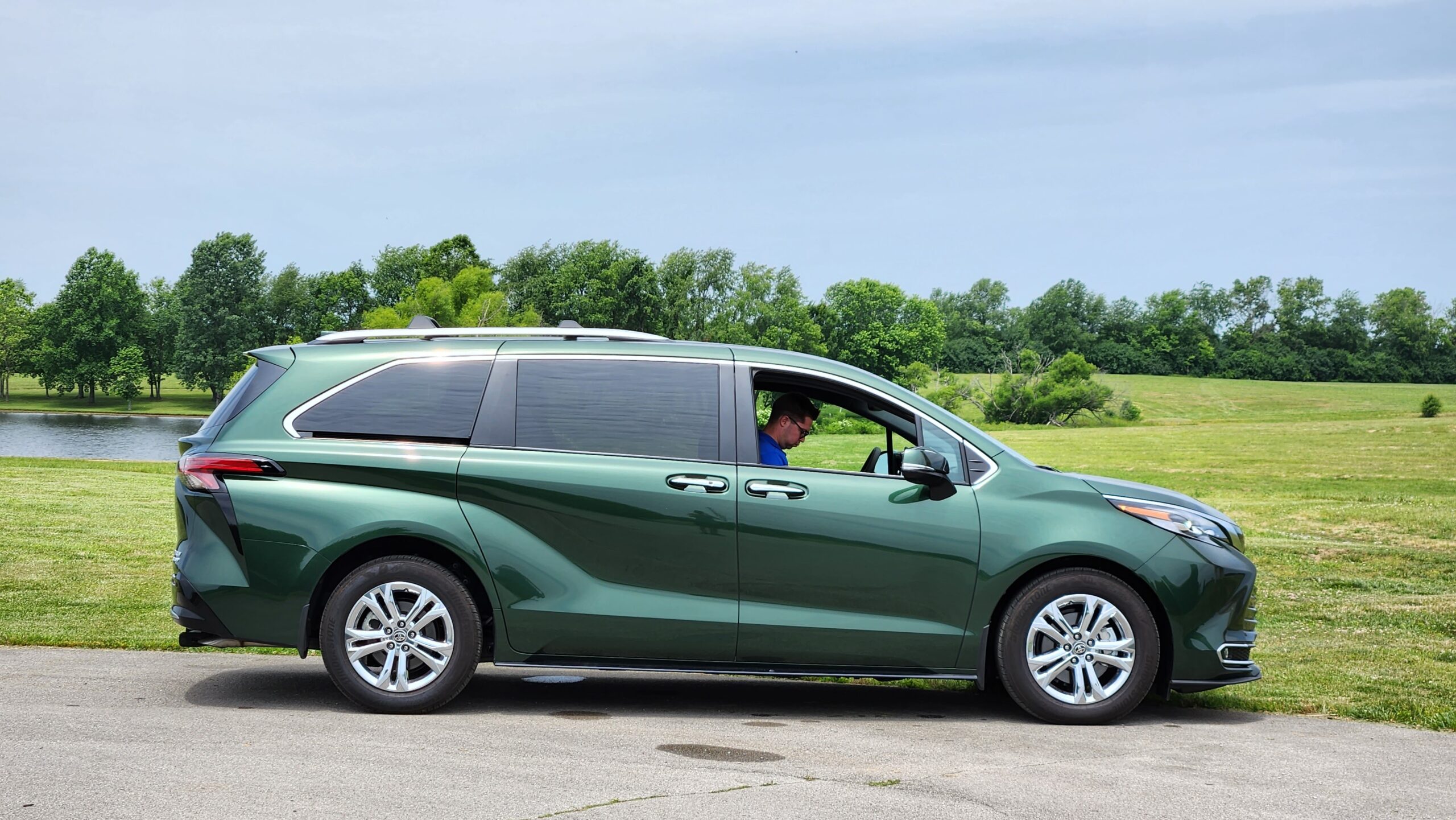
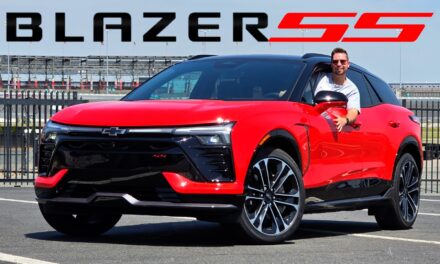









Recent Comments